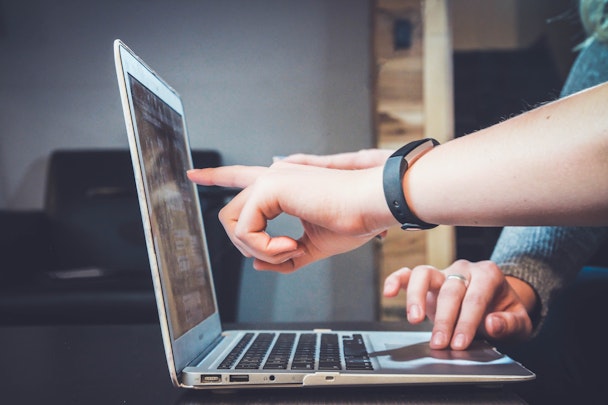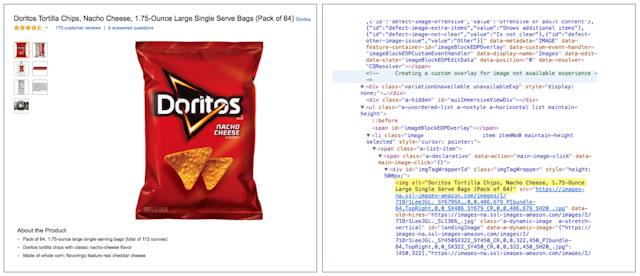Digital accessibility might be 2020’s most important marketing trend
A deaf man suing Pornhub for not having subtitles might lead to the internet becoming much more accessible to people with disabilities. Let’s give him a hand.

Six months from now, the European Union’s Web Accessibility Directive will take effect. It was passed in 2016 and mandates that public sector websites and mobile applications in EU member countries must be user-friendly to people who are blind, deaf or have certain other disabilities.
Websites created before September 2018 must comply by 23 September 2020. Those created after September 2018 had a deadline of September 2019. Mobile apps can wait until 23 June 2021.
The EU directive is only the beginning. Additional legislation on the continent as well as in the US and elsewhere means that marcom, product, SEO, UX, design and other teams might be very busy this year. Untold amounts of money in the form of fines and court judgements may be at risk.
One of the most important tasks for marketers in 2020 will likely be something that the industry rarely discusses – digital inclusion.
The legal history of web accessibility
The 2006 UN Convention on the Rights of Persons with Disabilities requires signatory countries to provide equal access to all information and communication technologies to people with disabilities. But historically, the UN usually has had little ability to enforce its own resolutions.
In the US, the 1990 Americans with Disabilities Act (ADA) is stronger and prohibits discrimination on the basis of disability. According to the US Department of Labor, the law pertains specifically to the areas of "employment, transportation, public accommodations, communications and access to state and local government programs and services".
For obvious reasons, the ADA, when passed, did not mention websites and digital communications tools. But according to the Bureau of Internet Accessibility (BOIA), the US Department of Justice (DOJ) holds today that if the ADA applies to a business or organisation, then it applies to its website and apps.
The BOIA further states that the DOJ cites these guidelines from the World Wide Web Consortium (W3C), an international community that develops open standards to ensure the long-term growth of the web, as acceptable metrics for accessibility. The recommendations include the use of high-contrast colour schemes and subtitles on videos.
The legal implications for internet-based communications became clearer last year when the US Supreme Court ruled that a case involving a blind man and Domino’s Pizza must go to trial. The plaintiff sued the chain because he said he could not order food on the chain’s website or mobile app with his screen-reading software.
“The blind and visually impaired must have access to websites and apps to fully and equally participate in modern society – something nobody disputes,” the man’s attorney said at the time. “This outcome furthers that critical objective for them and is a credit to our society.”
The Supreme Court precedent is good news for people with physical impairments but bad news for companies that do not want to spend the money to update their communications infrastructures.
According to the accessible technology firm UsableNet, the number of similar lawsuits in the US rose from 800 in 2017 to 2,200 in 2018. One later example was the aforementioned deaf man versus Pornhub one in January.
Back in the EU, the European Accessibility Act also became law last year. While the Web Accessibility Directive applies to the public sector, this act applies to private companies and aims to ensure accessible communications in all member states.
The potential cost to companies became clear in 2017. That year, Norwegian airline SAS released a new website that government regulators stated was not accessible enough. The verdict? SAS would have been fined €15,000 per day if it had not fixed the problems.
In the UK, the Equality Act of 2010 makes it illegal for businesses not to provide a service to a disabled person that is normally provided to others. In that context, the British government has a guide to making online services accessible. UK businesses will also still be subject to the EU’s two accessibility measures until the country, following Brexit, leaves the EU customs union and single market on 31 December 2020.
“EU law continues to apply to and in the UK during the transition period, so these rules continue to apply,” European Commission spokesperson Daniel Ferrie told me.
For information on other countries, the W3C has a list of relevant global laws and regulations.
The significance for marketers
A.Miroe is a Scandinavian web accessibility consultancy that offers services including digital inclusion for social media posts, content optimisation for voice search, workshops, training programmes, accessibility audits, requirement analyses and electronic document remediation.
“It makes sense to anyone that you shouldn’t exclude the 15% to 20% percent of the general population that experiences some form of disability,” Stein Erik Skotkjerra, the firm’s co-founder and chief technology officer, told me. He is blind.
“Saying no to every fifth customer trying to enter your shop makes no sense,” Skotkjerra added. “With the increasing focus on diversity and anti-discrimination, every company should work strategically to be more inclusive – in every way, really.”
One important accessibility example is the use of alt-text on websites. (SEO consultants will be happy.) Alt-text is a word or phrase within a web page’s code that describes an image. See the highlighted example in yellow below.

If a page has a picture of a flower, then the alt-text may state “flower”. This serves two purposes. First, the alt-text identifies an image for Google when the search engine crawls your website – and the use of alt-text can potentially increase your page’s organic search ranking for such terms. Second, many website accessibility tools for blind people will read the alt-text aloud to describe a picture.
For your website to serve those with visual impairments, it might need accurate alt-text for every single image. In addition, online products and communications channels might need material such as text-only versions, subtitles or speech recognition functionality to ensure accessibility for those with any type of relevant disability. It just depends on the specific laws in any given country.
The big picture of ‘universal design’
One proposed solution is for website and app creators to include so-called Inclusive Design Principles – also called ‘universal design’ – from the beginning rather than making changes and fixes at the end of a project.
Examples include online app notifications that use a live region rather than require proactive discovery by screen readers, consistent design patterns and page architecture and the addition of multiple methods to complete an action – rather than forcing all people to use a single one such as a mobile swipe that might be difficult for some to do.
“The idea of universal design is that if you consider the needs of the widest audience possible in your design, you will end up with a solution that is better for all,” Skotkjerra said. “The border between what is mainstream and what are assistive technologies or accessibility accomodations is becoming more and more blurry.”
The pivot towards universal design is happening alongside an overall movement to encourage businesses to hire and include more people with disabilities.
“The group of people with disabilities are generally highly educated and loyal, but few are employed,” Skotkjerra added. “This is primarily a question of prejudices among employers but also a question of accessibility.”
In 2015, Irish social entrepreneur and activist Caroline Casey – who is legally blind – founded Binc, which has launched a #Valuable campaign to put disability on company radars. Businesses can apply for The Valuable 500 by adding the issue to board agendas, making a firm commitment to take specific action and sharing the plan internally and externally.
“We could change the whole conversation about disability and business if we got 500 leaders and 500 brands on the most important stages in the world," Casey recently told the Nikkei Asian Review. The final 500 leaders will be announced at the UN General Assembly later this year.
In one example, Microsoft launched a YouTube channel last year devoted to accessibility. One video is a summary of the topic introduced by the company’s chief accessibility officer, Jenny Lay-Flurrie.
Disabled people can help companies
The issue is not only a moral one but also a performance one.
According to a 2019 study by Accenture, the American Association of People with Disabilities and non-profit organisation Disability:IN, companies with inclusive working environments for disabled employees had an average of 28% higher revenue, 30% greater profit margins and twice the net income of similar companies between 2015 and 2018.
Rand Fishkin, the co-founder and former chief executive of Moz who has now created the SparkToro audience intelligence platform, is a noted champion of diversity in the marketing and tech industries.
In 2015, Fiskin published a blog post discussing a product review that highlighted the benefits of a diverse team – one that includes people with disabilities.
“David Mihm (who’s partially colour blind) helped identify a few contrast variations that he literally couldn’t see. Martin York, one of our senior engineers who has dyslexia, commented on form inputs missing auto-corrections for spelling/mistypings,” he wrote. “One of the older members of our team noted that she had difficulty in parsing the text because the lines were too close together (aka overly-tight leading).”
Digital inclusion is not a movement of businesses paying lip service to an altruistic goal to sell more stuff or being outright hypocritical towards a stated brand purpose. The idea truly helps both people and companies at the same time.
After all, if Pornhub would add subtitles to all of its videos, the company would probably see an increase in pageviews and the corresponding online ad revenue. Even more people would give them a hand.
The Promotion Fix is an exclusive biweekly column for The Drum contributed by global keynote marketing speaker Samuel Scott, a former journalist, newspaper editor and director of marketing in the high-tech industry. Follow him on Twitter. Scott is based out of Tel Aviv, Israel.

